Insects of the Yucatan
They're not all as cute as the jeweled maquech pictured above, but these insects are your neighbors in the Yucatan.
Tailless Whip Scorpion (or Tailless Whip Spider) – Despite its appearance and frightening name this fascinating insect is fairly harmless. These insects have no venom and are not aggressive. Named for their long "antenniform" front legs which help them sense prey, they use pincers called "pedipalps" near their mouths to catch and eat small invertebrates.
These are ancient animals with their own taxonomic order. Fossils have been discovered which date back to the Carboniferous Period (359 - 299 million years ago), long before the ascension of dinosaurs.
As of 2016, about 155 species of tailless whip-scorpions had been discovered and described. In the Yucatan Peninsula three species are listed, all in the genus Parraphrynus.
Fireflies (or Lightning Bugs) – During late spring and early summer, after the first afternoon rains become a frequent event, luciérnagas (fireflies) often appear around dusk in many of the rural areas of Yucatan. We have been told they were once abundant in the gardens of Merida’s colonial homes, and we have seen one or two in our garden over the years. But nothing compares to seeing hundreds at once. One night, while driving between Yunku and Temozon Sur, we found ourselves in a literal firefly “storm”.
Every direction was lit up with dancing, phosphorescent green flames. We stopped the car, stumbled outside and stood like children with our mouths agape for half an hour. Magic was definitely in the air.
Butterflies and Moths – Yucatan is home to scores of mariposa (butterfly) and mariposa nocturna (moth) species. Many of these are quite large and colorful. Throughout the summer months, you’ll see a profusion of butterflies of every stripe floating lazily through your yard and around Yucatan’s fields and jungles. As a resident, your yard will eventually be treated to a visit of one or more types of caterpillars, who will wind themselves up in cocoons to later emerge and join the butterfly dance.
The only problem with butterflies is that you will undoubtedly kill dozens while driving through their flight path. If you drive outside Merida, you’ll sometimes find them clustered on rural roads, where you’ll be forced to crush hundreds if you hope to proceed.
There is one species of moth here that is similar to the Hawk Moth. It’s very dark brown, with a large, black spot on each wing, and it’s as big as your hand. When we first moved here, one flew into our house and we were sure it was a bat until it finally alighted on the wall. Since then, we have come to expect them as occasional ornaments in the house. Locals tell us they’re bad luck, that when you see one, it means someone you know has died.
Bees and Wasps – There are several species of abeja (bee) in Yucatan. The world-famous Melipona Bee is a honey bee native to the Yucatan. It’s small, unassuming and doesn’t sting, although we’ve never tested the theory personally. Yucatan honey has long been an industry here, is widely exported and uniquely delicious. It is reportedly higher in anti-oxidants than honeys produced by other bee species. There are different varieties of Melipona honey depending on the types of flower the bees have fed on. Dzidzilche blossoms are favored for honey destined to become Xtabentun, a Mayan spiced mead. The thriving honey industry owes it all to this Yucatan native and its appetite for the special flowers that grow in this region.
Despite this, European honey bees are increasingly being favored by local producers because these bees produce greater quantities of honey. Compunded by threats to habitat, pollution and other environmental factors, North American bee populations are gravely threatened. We spoke to Casa de Abejas, an organization encouraging local communities to adopt Melipona hives and sell their unique honey in the Yucatan.
Do you remember years ago when there was a scare in the media about so-called "Africanized Killer Bees”? Well, they’ve arrived in Yucatan. Although rare – we’ve encountered them only once in all our travels – they can inflict bring pain and suffering. A couple years ago, a school near Motul was attacked and one person died. You’ll know you’re in their presence when you find their nests, which look like heaped up piles of elephant dung.
Most of the avispas (wasps) in Yucatan are not much different than you would find back home. There are a few beautiful exceptions and none seem particularly aggressive. If there’s a place in your back yard that is consistently muddy, you can expect a nest under your tejaban. And occasionally, your pool or fountain will be visited by one looking for water. We have never felt threatened by them.
Spiders – In our experience, Las arañas are not very pesky in Yucatan and probably contribute to keeping some of the more evil insects in check. Although they are a year-round sort of critter, they seem most productive in the Fall. Where we come from (in California) there’s the bone-chilling Black Widow, which lurks just about everywhere – the firewood, the tackle box, an old stack of newspapers – and has one of the most dangerous bites of any creature. We know of nothing like it in Yucatan, but there are some pretty impressive specimens. In the center of the peninsula dwell the red-rump tarantula, which are actually elegant and docile bugs. They can be unnerving because they are rather large, but they’re harmless.
Locusts – Occasionally, there will be a plague of one kind of insect or another in Yucatan. The firefly storm mentioned earlier is an example, but other sudden outbursts of insects also occur, including locusts or grasshoppers, called saltamontes in Spanish. Our first encounter was while driving east out of Merida when we saw a low, dark cloud approaching faster than clouds should. Before we knew it, we were being battered by hundreds of little hard bodies, as if in a hailstorm. We have since seen a cloud of locusts flying confusedly over Merida. We speculate that they show up during unusually dry summers, because their arrival is not an annual event. We've seen them twice in five years.
Scorpions – We’ll be candid about Las Alacránes. They do indeed scare us. We have encountered two in our home over the years and nearly fainted both times. The scorpion pictured here met Working Gringo on his way to the shower one morning, provoking naked panic. Yucatan scorpions are black and can measure up to four inches long, stem to stern. They look really menacing, but we have come to realize they are merely drawn that way. If left to themselves, they would really rather live private lives under a rock somewhere and only come out when forced, usually to look for a source of water. A popular tale told to newcomers is not to leave your shoes on the floor or else a scorpion may crawl inside. We doubt it, but we still shake our shoes out on occasion before putting them on.
We know of one person who was stung by a Yucatan scorpion and she tells us that it is quite painful, on the order of a wasp sting: it burns, it swells and your tongue goes numb. The immediate pain lasts between 30 minutes and four hours. We’ve been told chewing on charcoal helps somehow. Those who are sensitive to bee and wasp stings may develop other symptoms, like difficulty breathing. In these cases, you should go to an emergency room, where you will likely receive an injection of an antihistamine. Scary as they are, a Yucatan scorpion sting won't kill you.
Cockroaches – We didn’t have much experience with Las Cucarachas before moving to Yucatan, even though they are not uncommon in much of the U.S. What we’ve learned is probably not uncommon either: to respect and loathe them. The species here is the American Cockroach, which can grow to a length of two to three inches.
Cockroaches must be the most intelligent of insects. They’re probably visitors from another planet. They seem to understand human behavior and adapt to us better than we do to them. They know exactly what your line of sight is and can disappear in a flash like David Copperfield. They anticipate your next move. When motivated, they can fly. They perch atop the door to survey you intently as you frantically empty a shelf near the floor where you last saw them flee. They are seriously uncanny.
They are also unclean and should not be allowed to remain as houseguests. Cockroaches carry bacteria and disease.
Like other insects in Yucatan, cockroaches are both seasonal and periodic. The summer of 2004 was our worst cockroach year so far. At first there were only one or two, which we tracked down individually by trapping them under a plastic cup and bagging them in a Ziplock before tossing them in the trash. But it wasn’t long before we were overrun. We would come home at night, switch on the light and watch as half a dozen fled from the hallway, reminding Working Gringa of her time living in New York City. At the worst point, there wasn’t a room in the house you could enter without upsetting a bevy of roaches. You may never experience a genuine desire to murder something until this happens to you.
That’s when we researched the issue thoroughly, taking the necessary measures to eradicate them and prevent future infestation. Fortunately, there are many effective measures you can take. We have found that commercial roach baits (not traps) are the best, long-term solution. Deposit them in cool, damp, dark places where roaches make themselves at home. Another is to observe their pathways and sprinkle these locations with silica or boric acid dust, which causes death by dehydration. In humid Asian countries, neem leaves are placed in cupboards, wardrobes and car interiors which act as a humane and organic deterrent.
Termites –The variety of la termita in Yucatan is subterranean, meaning they live underground, but this doesn’t limit them to underground activity. They will build “mud tubes” wherever they want to go and will chow down on any softwood they find. For this reason, you should not bring your norteamericano furniture when you move to Yucatan unless it is made of hardwood, cedar, plastic or metal. We didn’t receive this news and brought most of our furniture with us. One of these pieces was a large, overstuffed Victorian sofa. Sadly, the infrastructure was made of delicious Douglas Fir. One day, we moved it away from the wall to clean and discovered the telltale mud tunnels. We flipped the sofa over and discovered an entire colony of termites infesting every scrap of wood that remained. Needless to say, the couch was history.
There are many reasons why Colonial homes in Yucatan are made of stone, and termites might be one of them. Still, they manage to create their pathways along stone and find something to eat. They are industrious creatures, and if you find them in your house, you may need the services of a professional exterminator. There are plenty in Merida to choose from.
Ants – We are outnumbered and resistance is futile. There are roughly six billion humans on the planet and probably twice that many hormigas (ants) in Yucatan alone. If you want to truly understand the relationship between ants and humans in the tropics (and you probably do not), we’d suggest reading One Hundred Years of Solitude by Gabriel Garcia Marquez. Yet, once you have finally accepted your place in their world, you may discover that ants are perhaps the most interesting of Yucatan’s insects.
There are many different types of ants in Yucatan. There are incredibly small ants that are almost translucent. If you happen to plow into a bag of potato chips they’ve infested, they light up your mouth like Pop Rocks candy. We dont recommend this experience, and always wear our reading glasses now before eating potato chips.
There are ants that use the channels chiseled inside your walls for the electrical wires as highways through your house. Sometimes they come to visit, other times they are simply passing through. These ants may gum up your light switches, which then have to be replaced. There are ants that infest new electronic equipment, purportedly to eat the insulation on the wires. Beware the ant crawling around your keyboard!
There are “Marauding” ants that show up from all directions like pirates to haul away dead insects or a large crumb dropped from the table. We have watched these for long periods as they coordinate an awkward carcass up the wall to their den. We have also trekked through the bosque and happened upon foot-wide rivers of Army Ants as they devour everything in their path, including the path. We’ve stood on large, seemingly empty swaths of lawn, only to discover that dozens of biting Fire Ants have crawled up our trousers... and had to quickly free ourselves from said trousers in the full light of day. Ouch!
The most interesting and destructive ant species is the leaf cutter. On any given evening in Yucatan, you may see a long line of these marching across the top of your garden wall, each waving a bit of leaf overhead, sparkling in the moonlight like a silent Carnaval parade. For a few moments, the effect is enchanting, until you realize that’s your garden vanishing into the night. Leaf cutters can entirely denude a large plant in one night and can leave a typical garden bare within a week.
The standard remedies for ants generally work in Yucatan, although the results are always short-term and constant vigilance is required. Never leave food out and clean up immediately after cooking. Store anything edible in either Tupperware or Ziplock plastic bags. We put ant powder (Diazinon) behind our electrical outlets and switches to prevent traffic, but in some cases – especially with the “Marauding” ants, we just let them have their way with us, as they generally don’t hang around after their work is done.
Leaf Cutter ants are another matter, once they have a bead on your garden; there is no hope unless you take action (with prejudice – no organic gardening strategy works here). The preventative solution is to plant things they don’t covet. They generally prefer sweet, aromatic or succulent plants because they use these to produce fungal food in their colonies. They are particularly fond of hibiscus, roses and, we've noticed, anything colored red. They tend to ignore the common tropical plants that we treat as houseplants back home, like ferns and spider plants. The ultimate solution is pictured here. It is often called padrón by the locals, but this particular brand is called Extermirex. Only use it if you can find the entrance to the colony. Then, while wearing rubber gloves, pour the granules into any holes the ants are using and cover with dirt. The entire colony will be dead within five days. It is the most effective solution we've found.
Mosquitos – “There were many dead in the Nootkas village. In each dead body there was a hole through which blood had been stolen. The murderer, a child who was already killing before he learned to walk, received his sentence roaring with laughter. They pierced him with lances and he laughingly picked them out of his body like thorns. ‘I’ll teach you to kill me,’ said the child. He suggested to his executioners that they should light a big bonfire and throw him in it. His ashes scattered through the air, anxious to do harm, and thus the first mosquitos started to fly.”
This ancient legend comes to us courtesy of volume one of Genesis (Memory of Fire Trilogy, Part 1), by Eduardo Galeano. We have found no better explanation for why there are mosquitos in the world. What we don’t understand is why these little monsters have a Spanish name, now used in many languages. Mosquito means, “little fly”, but here in Yucatan they simply call them moscos, meaning, “fly”, probably because in Yucatan they come in all sizes.
There are over thirty species of mosquito in Yucatan that sting humans but only the female does the stinging. They are considered a health threat by the government, which mounts strenuous public education campaigns to raise awareness and prevent the spread of Dengue Fever and other disease. At times, government workers will go door-to-door, inspecting yards for standing water and depositing pellets of bacillus thuringiensis (BTi) to kill mosquito larvae. Other times, trucks will roll through the streets of Merida, misting the air with malathion or pyrethrum to kill adult mosquitos.
Part of our personal arsenal against mosquito bites is shown here. It includes both lotion and spray versions of a DEET-based repellent, as well as coils that you burn like incense and laminas (cartridges) that you plug into a wall outlet. Other products produced from citronella oil (lemon grass) or neem oil are also effective against several mosquito species. Some Merida residents maintain an ornamental pool in their yard that is planted with pond flora and populated with small fish. The mosquitos end up delivering their eggs to the fish. Another popular prevention is a mosquito net draped seductively over your bed. This is a rather romantic, if clichéd, approach to avoiding bites in the tropics, and in our experience, a net is as likely to keep mosquitos in bed with you as to keep them out. Plus, it doesn't seem to last long around cats.
The most high-tech mosquito abatement gadget to come along recently is the electrical or propane-powered mosquito trap. Mosquitos are attracted to what we exhale, namely CO2, and other scents our bodies produce. These traps emit CO2 and other “attractants” and vacuum up any hapless bugs that happen by. We’ve been told that this invention is more effective in Yucatan than in Florida and other locations in the U.S. because most yards here are surrounded by very tall, stone walls, compared to the low fences used in the States. Our yard enclosures help ensure that the attractants are not blown away and reduce the total number of mosquitos that enter the yard on any given day. Prices for these traps run between $300 and $1,500 USD. A $500 trap can protect an area of up to one acre. We plan to get one of these in our new house (if we can still afford it when it's finished).
As you can probably see from our list, when it comes to insects, living in Yucatan is not much different than living in the more tropical regions of the U.S. and especially the Gulf States of Florida and Louisiana. If you're traveling or moving here from the southwestern United States, Canada or Alaska, we hope this article helps prepare you for a few surprises from our corner of the insect world.
Concerned about repelling those nasty little bugs? Try an organic neem-based repellant from Neem Natural! Neem tree oil helps repel a number of pests when used wither as a foamy soap or a non-toxic spray. Neem products are all natural, not harmful to you or your environment and produced locally. Learn about the neem farm here in the Yucatan that is growing natural neem for holistic applications.




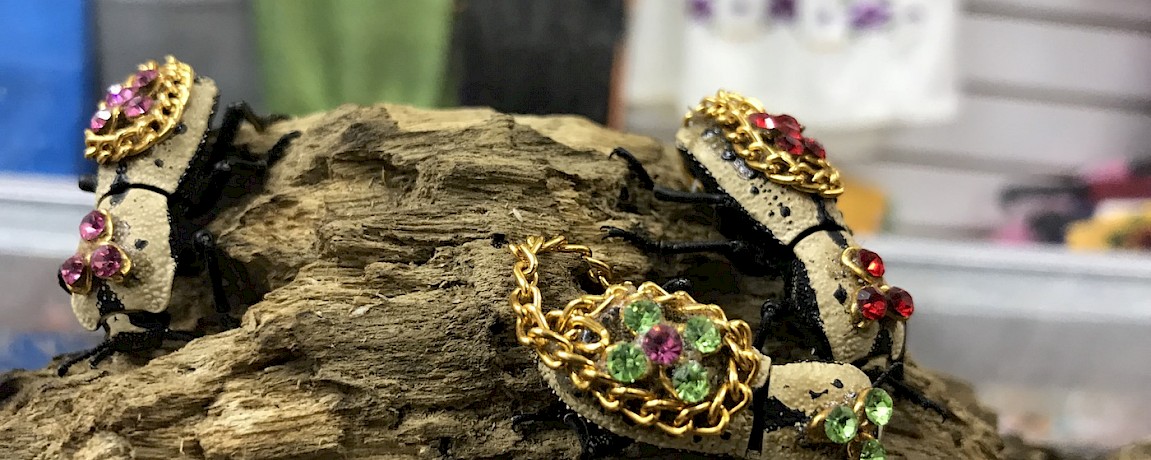

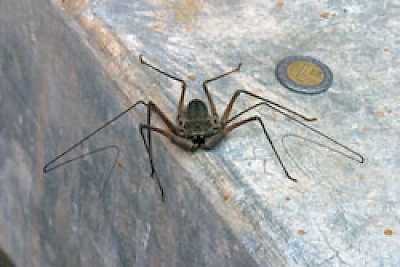
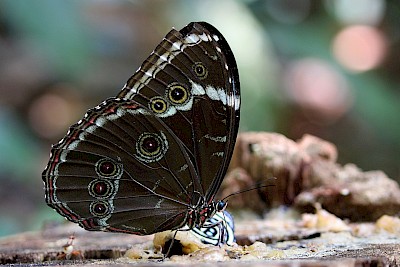
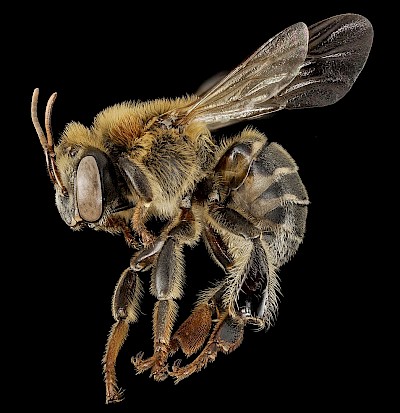
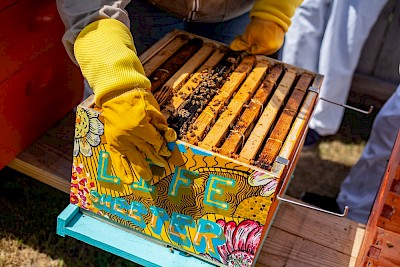
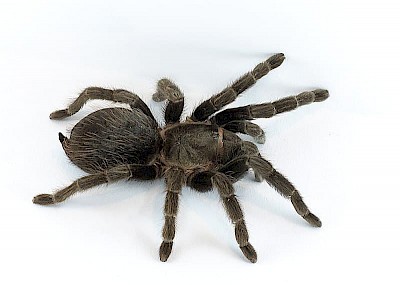
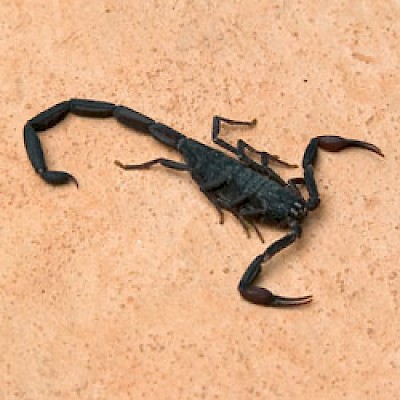
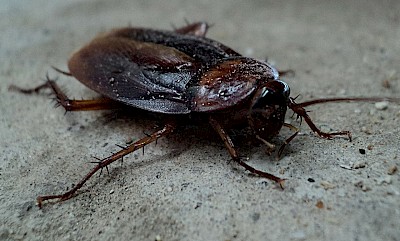

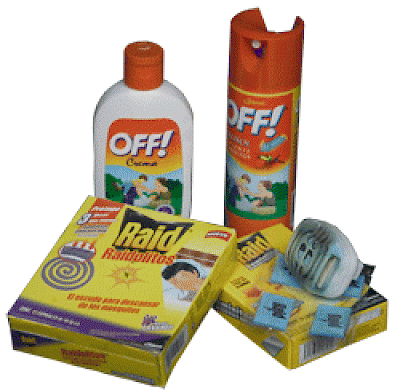

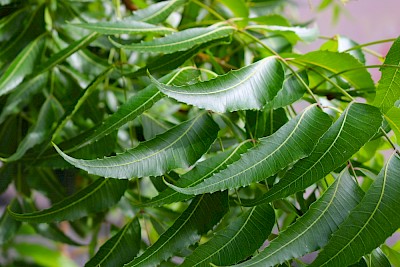

Comments
Nikola 6 years ago
I’m in Akumal at the moment and see a lot of large wasp looking insects. They seem to spend time digging small holes in sand. Any ideas what they are? They don’t seem bothered by me.
Reply
Nick 6 years ago
Hello! What is the name of the insect in the second photo? I killed one tonight and would love to know the name so I can research. This is the only place I can find a photo of one!
Reply
Briana Smitherman 8 years ago
Hi there! We are tourists staying at one of the all inclusive resorts in play del carmen,and stumbled upon this article while searching for what possible insects could be biting me! They look a lot like mosquito bites and itch like crazy but we have literally not seen any mosquitoes yet! Are they just super sneaky? In Washington state we have a ton of mosquitoes so we are quite use to seeing them but we haven't seen them yet here. I know they are here, are they just small or like I said "sneaky"? I usually don't have a problem with them in Washington state but my husband gets eaten alive. However, it's the opposite here for us! The reason we are asking is because we are scared of what it might be if not mosquito bites! We've heard of bed bug problems in warmer climates, but from looking up what those bites look like the ones I have look a tad different. We tried looking to see if we saw them in our bed and don't see anything but we're not familiar with them and heard they hide well and come out when it's dark. The other weird part is the bites are all on my feet and ankles, other than one big one on my upper thigh. Any thoughts or advice? Help!!!
Reply
Merri 8 years ago
Yes, they are mosquitos. They are very small and fly about 2-12 inches above the floor, hence all the bites on the lower legs and feet. It took me years to be able to spot and identify them. The only thing that prevents them is applying the local mosquito dope lotion immediately upon awakening / showering and again in the late afternoon. Make sure to put it on your feet too. They're very sneaky and will hide out in clothing, behind couches, in cabinets, showers etc.
Reply
Claus 8 years ago
Hi. From Denmark. Have lived in north merida for 2 years and have never had problems. The ants are a big annoying and the flies...but once they are dealt with its fine. Just be sure to have screens on all windows and in our first house, electrical ants was a bother..bad house. Now. No problem. Just encountered a baby scorpion black today in the patio. Just killed it. First one in 2 years. But then again we have a dog and a cat. Found that mice actually was a bigger issuse...then we got a cat. MERIDA is a great city. Clacph@gmail.com if any questions.
Reply
Pamela Wasserman 8 years ago
Hi. We are US based, but considering Mexico, Tulum or Cozumel. Completely ignorant to everything travel related. Any advise, recommendations, contacts, etc would be highly appreciated.
Pam
Reply
Gary Carter 8 years ago
Help,
Planted a new patch of lawn and it sprouted a grew rapidly. Now something is decimating patches of it it square foot sizes. The only insects signs (other than ants) are small black and white striped wasps? Do you know whats going on? What can I do?
Thank You Gary Carter
Reply
Francis Meyrick 9 years ago
I can wholly relate to this, as I had a deep and meaningful quasi-spiritual encounter with a very smart cockroach one time. Smart is probably an understatement. This cockroach was a genius. I know he sent me intense waves of his loathing. I felt it.
For what it's worth, my cockroach experience is described here:
http://www.writersharbor.org/work_view.php?work=877.com
Reply
Working Gringa 9 years ago
Thanks! We too have had very meaningful encounters with cockroaches... they seem to be very smart.
Reply
(0 to 9 comments)